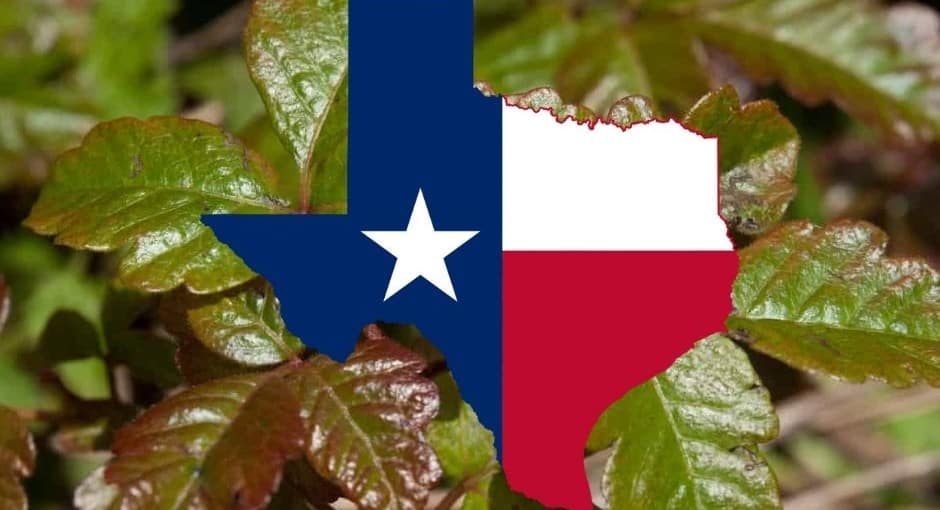If you live in Texas or are visiting and you love mother nature, be prepared to run into at least a few poisonous plants. Most of the plants you will encounter will be harmless, but you never know when you might run into some toxic types.
Contents
- 1. Poison Ivy (Toxicodendron radicans)
- 2. Texas Bull Nettle (Cnidoscolus texanus)
- 3. Poison Sumac (Toxicodendron Vernix)
- 4. Poison Hemlock (Conium maculatum)
- 5. Wisteria (Wisteria)
- 6. poison oak (Toxicodendron diversilobum)
- 7. Holly (Ilex)
- 8. Mistletoe (Viscum album)
- 9. Morning Glory (Ipomoea)
- 10. Lily of the Valley (Convallaria majalis)
- 11. Jimsonweed/Devil’s Weed (Datura stramonium)
- 12. Hyacinth (Hyacinthus)
- 13. Oleander (Nerium oleander)
- 14. Dumb Canes (Dieffenbachia)
- 15. Rosary Pea (Abrus precatorius)
- 16. Larkspur (Delphinium)
- 17. Irises (Iris)
- 18. Bleeding Heart (Lamprocapnos)
- 19. Azaleas (Rhododendron)
- 20. Buttercup (Ranunculus)
- 21. Nightshade (Solanaceae)
- 22. West Indian Lantana (Lantana camara)
- 23. Jasmine (Jasminum)
- 24. Daffodil (Narcissus)
These plants can be downright deadly if ingested by humans and livestock. Some particular types of plants can also be poisonous if they casually graze your skin. It’s vital to watch out for those.
If you enjoy spending large amounts of time outdoors, it’s also a great idea to wear full clothing, just in case you come across any such poisonous plants. Also, if you have just moved to Texas, do make sure you have adequate knowledge of poisonous plants before leaving your kids unsupervised in the backyard. You never know if a toxic species might be growing there.
Also, do examine the premises and yard thoroughly before purchasing or renting so that you know for sure your surroundings are safe. To sum it up, whether you are out hiking in the woods or simply in your backyard, watch out for these 24 Poisonous Plants in Texas. It’s always better to be safer than sorry.
1. Poison Ivy (Toxicodendron radicans)
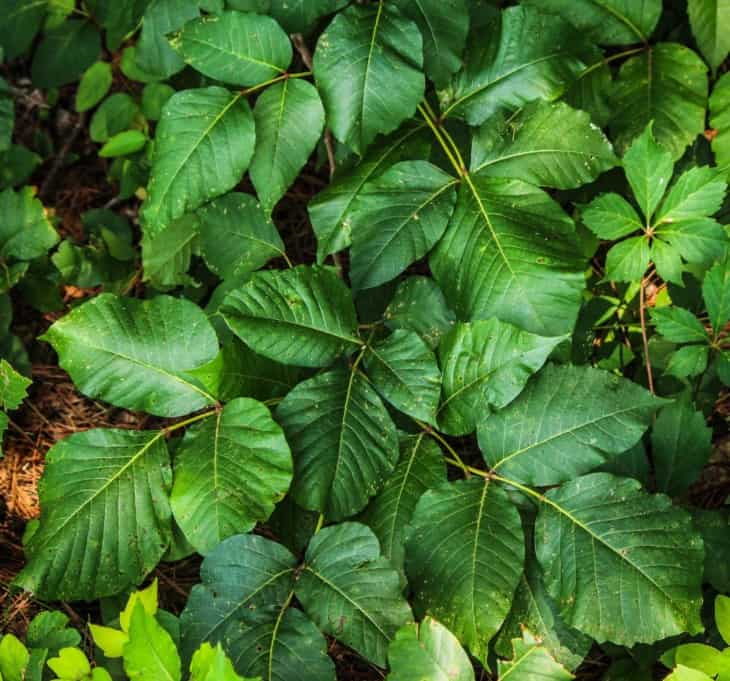
Poison Ivy grows almost everywhere in Texas except for the western Panhandle and can grow in many different types of environments. One who touches Poison Ivy can get an irritating, itchy, and painful rash. The rash is fundamentally caused by a clear liquid called Urushiol found in the plant sap. Poison Ivy commonly grows on climbing vines, shrubs, and smaller plants.
2. Texas Bull Nettle (Cnidoscolus texanus)
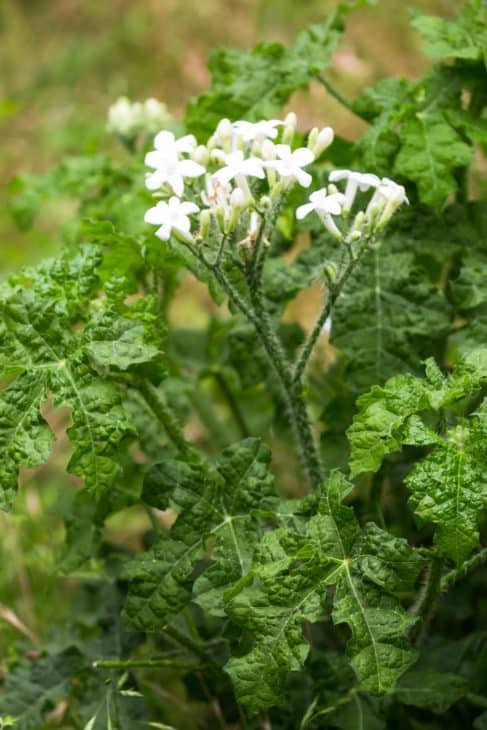
The Texas Bull Nettle is a perennial plant that consists of sprawling branches and thick rootstock. Its stems and leaves are green in color. Contact with the Bull Nettle can be extremely uncomfortable. Even gently brushing past the Bull Nettle by accident can cause extreme pain, stinging, and itching that can last hours.
3. Poison Sumac (Toxicodendron Vernix)
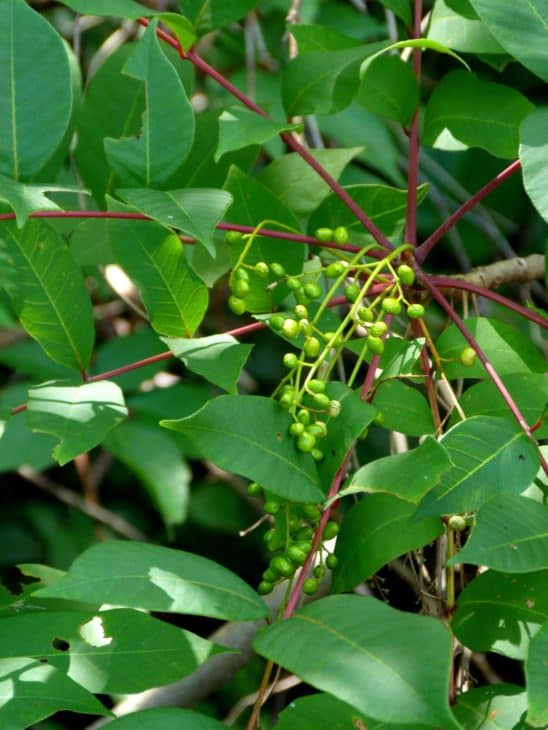
The Poison Sumac is a small tree or woody shrub that can grow up to 9m tall. It is also commonly known as thunderwood. All parts of the Poison Sumac contain Urushiol, a resin that causes irritation to humans. When this plant is burnt, inhaling the smoke causes a rash in the lining of the lungs, causing extreme pain.
4. Poison Hemlock (Conium maculatum)
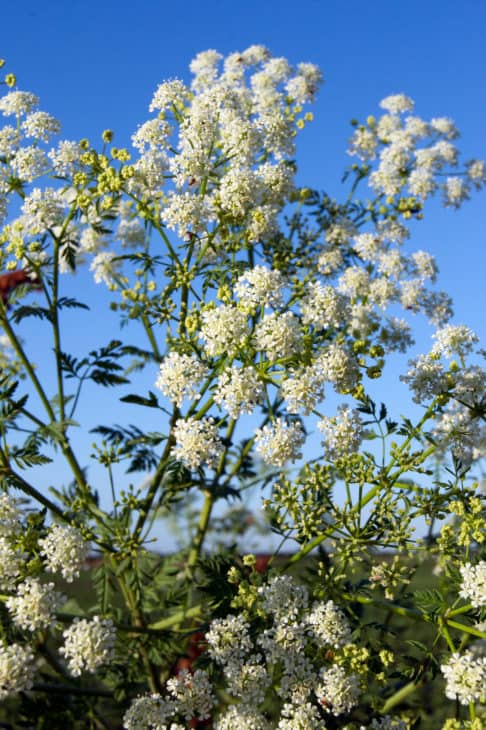
The Poison Hemlock, also known as Wild Hemlock, is a herbaceous flowering plant that can live in a variety of environments. It is capable of spreading, thus becoming an invasive weed. All parts of the Poison Hemlock are toxic, especially its seeds and roots and particularly if ingested.
5. Wisteria (Wisteria)
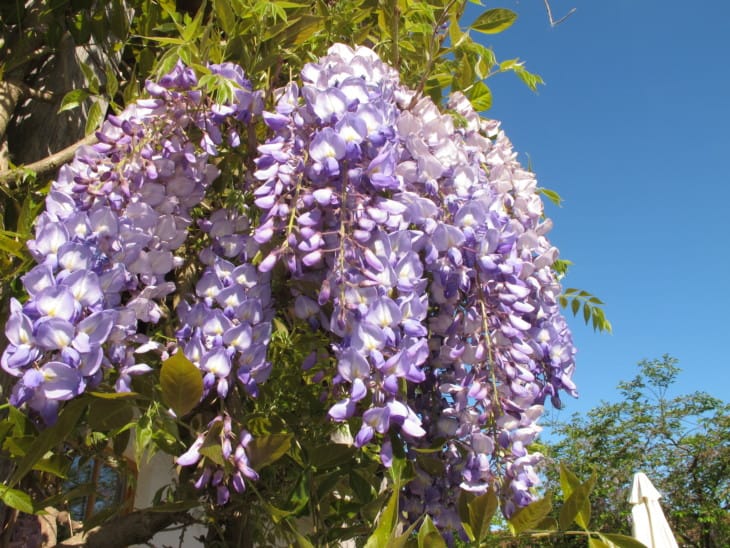
The Wisteria plant is a woody, twining vine that belongs to the Fabaceae family. When growing out of their native range, the Wisteria is considered an invasive species. All parts of the Wisteria are toxic, especially its seeds and pods. If ingested, symptoms include diarrhea, stomach ache, weakness, vertigo, and vomiting.
6. poison oak (Toxicodendron diversilobum)
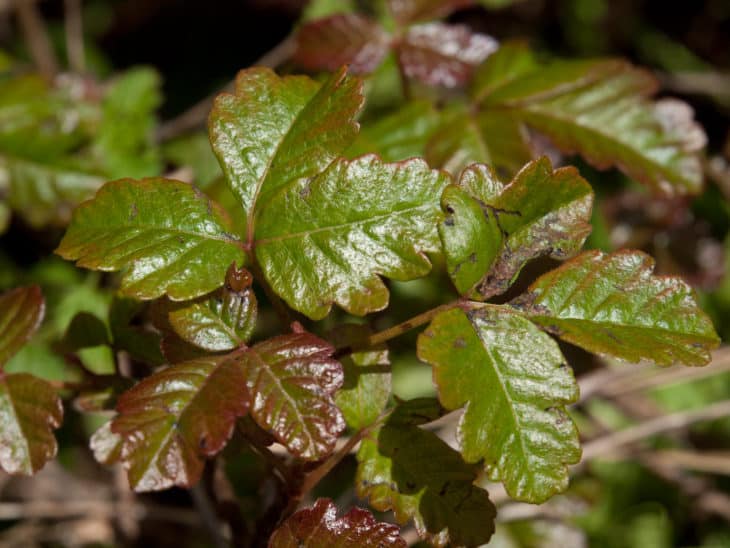
Poison Oak or the Pacific Poison Oak, as it’s more commonly known, is a member of the Sumac family. It is a shrub or woody vine that can cause an intense rash by touching or inhalation of smoke. Symptoms by touching begin with itching and resort to inflammation and blistering.
7. Holly (Ilex)
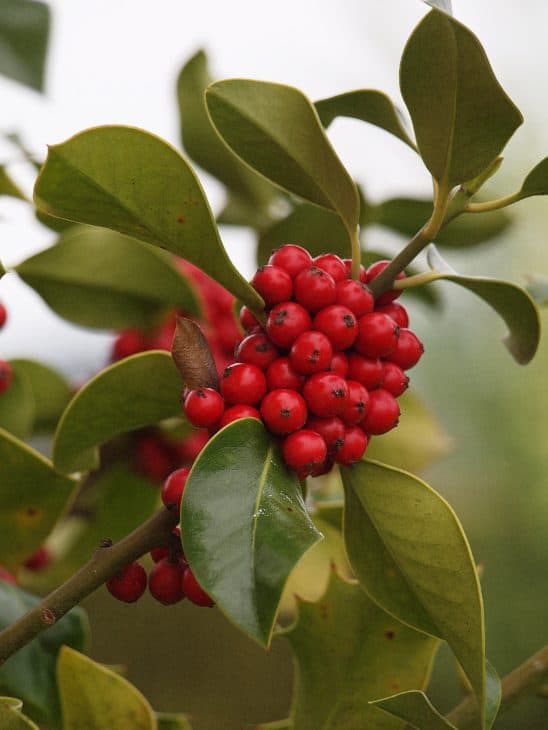
Holly includes many species of trees and shrubs that have evergreen foliage and unobtrusive flowers. Holly plants are toxic to livestock and pets. Ingesting holly berries can cause diarrhea and vomiting in humans. If children eat more than 20 berries, it can be fatal. Eating Holly leave be toxic for humans, such as vomiting, intestinal problems, and nausea.
8. Mistletoe (Viscum album)
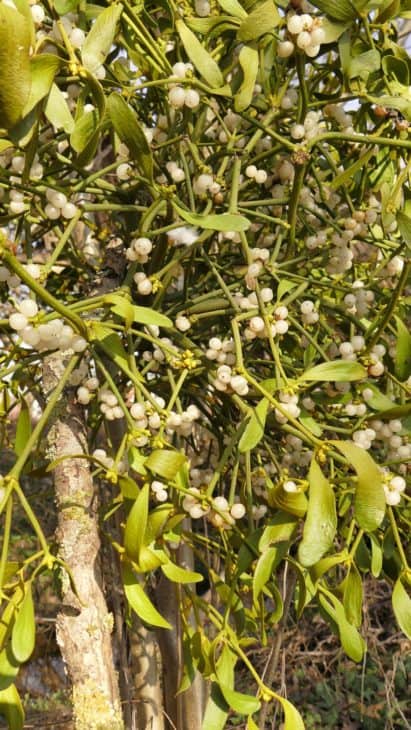
The mistletoe is considered a hemiparasite and can grow on the stems of several species of trees, from which it draws nutrients and water. Contact with the mistletoe can be toxic, and one can get seriously ill by eating the mistletoe berries.
9. Morning Glory (Ipomoea)
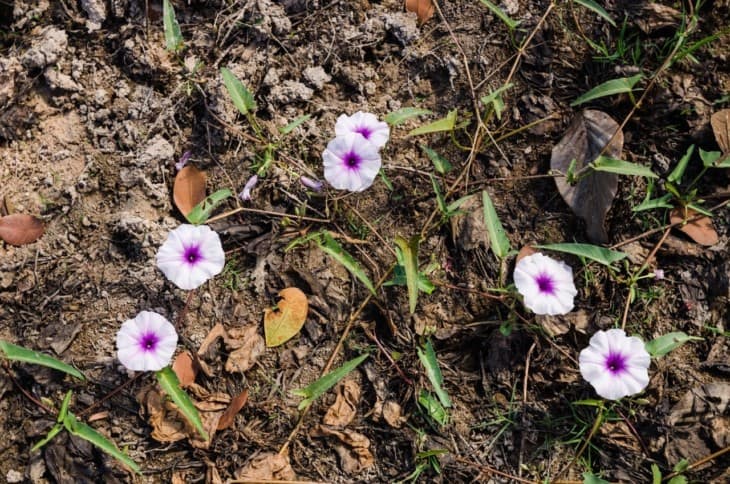
Morning glory flowers reach full bloom early in the morning. These showy flowers are very attractive, especially to children. The seeds of the Morning Glory can be poisonous, especially if they are ingested in large quantities.
10. Lily of the Valley (Convallaria majalis)
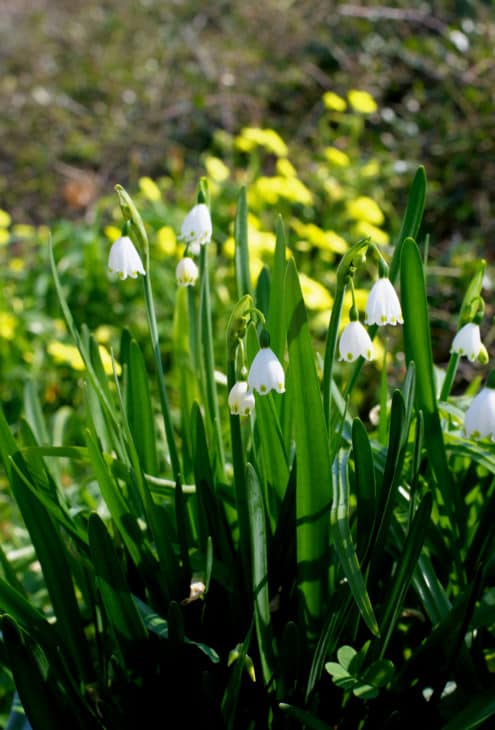
Lily of the Valley is a flowering plant of the woodlands with bell-shaped flowers. The flowers are sweetly scented and grow in spring. This flower contains concentrations of Cardiac glycosides that are poisonous to both humans and animals.
11. Jimsonweed/Devil’s Weed (Datura stramonium)
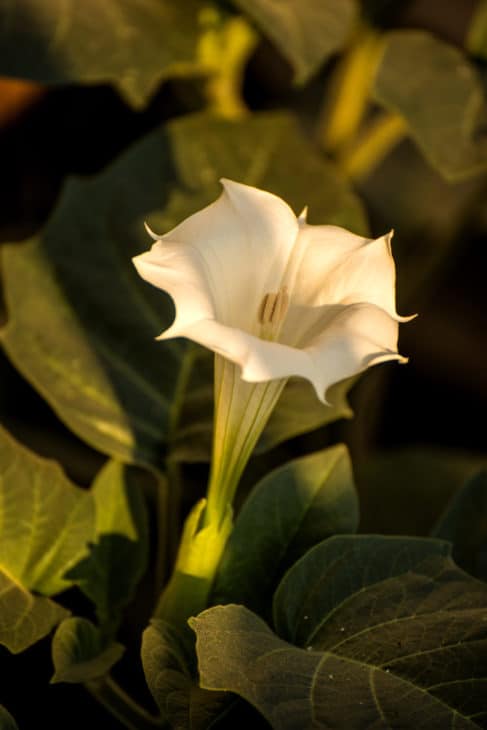
A flowering plant of the Solanaceae, the devil’s weed or the devil’s snare, is considered an aggressively invasive weed. Symptoms of ingesting the herb include hallucination, delirium, urinary retention, and bizarre behavior.
12. Hyacinth (Hyacinthus)
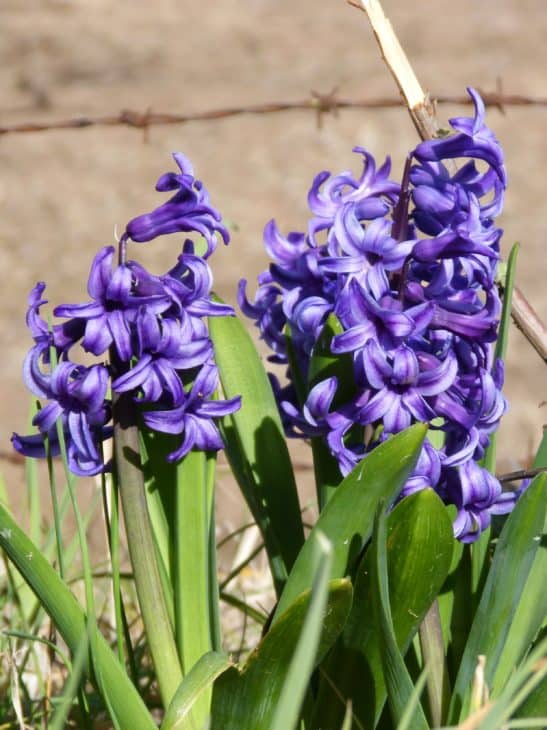
Hyacinths are small, bulbous perennials that bloom in spring. Hyacinth bulbs contain oxalic acid, which is poisonous. Handling these bulbs can cause skin irritation. It is recommended to wear gloves when handling these flowers.
13. Oleander (Nerium oleander)
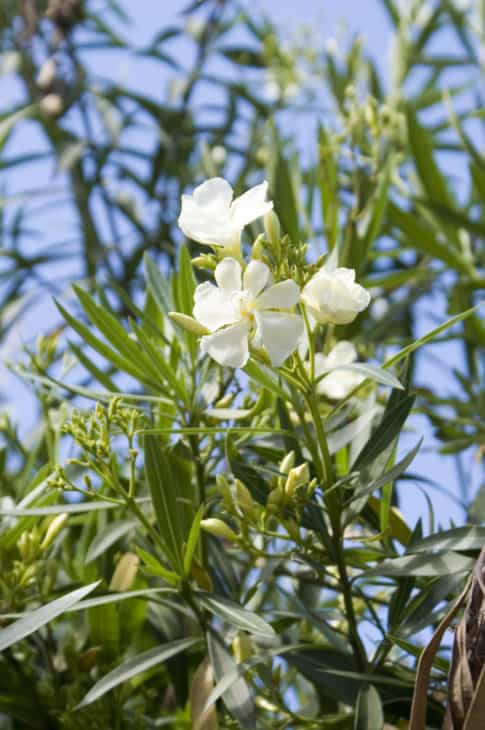
Oleander is a well-known shrub or small tree that is commonly used as a landscaping or ornamental plant. Historically, Oleander has been considered poisonous as it is toxic to animals if ingested in large quantities.
14. Dumb Canes (Dieffenbachia)
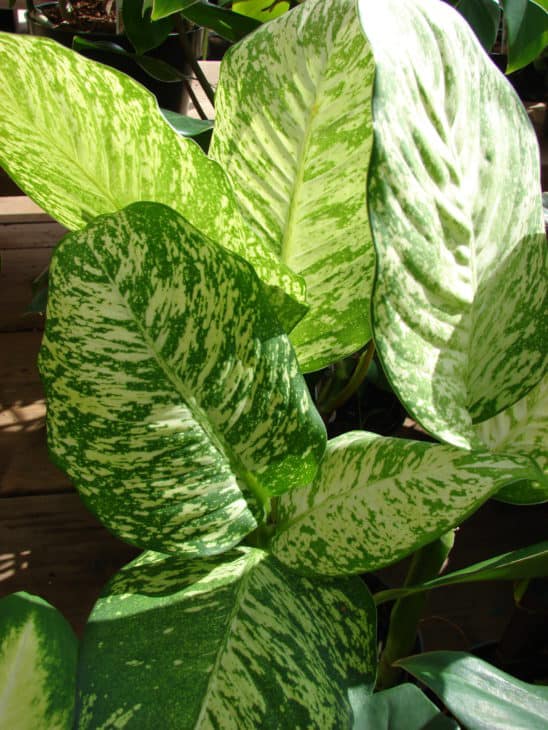
Dumb Canes, also known as mother-in-law’s tongue and leopard lily, are tropical, flowering plants belonging to the Araceae family. Its leaves contain calcium oxalate crystals that are called raphides. If chewed, they can cause asthma and a temporary burning sensation.
15. Rosary Pea (Abrus precatorius)
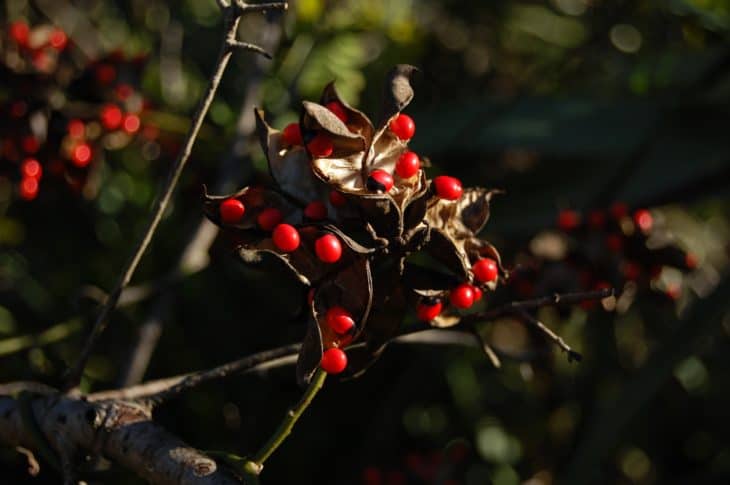
The Rosary Pea is also known as JequirityPea. It is a flowering plant of the Fabaceae bean family. Its seeds are toxic due to the presence of abrin in them. If ingested and well-chewed, they can be fatal for both adults and children.
16. Larkspur (Delphinium)
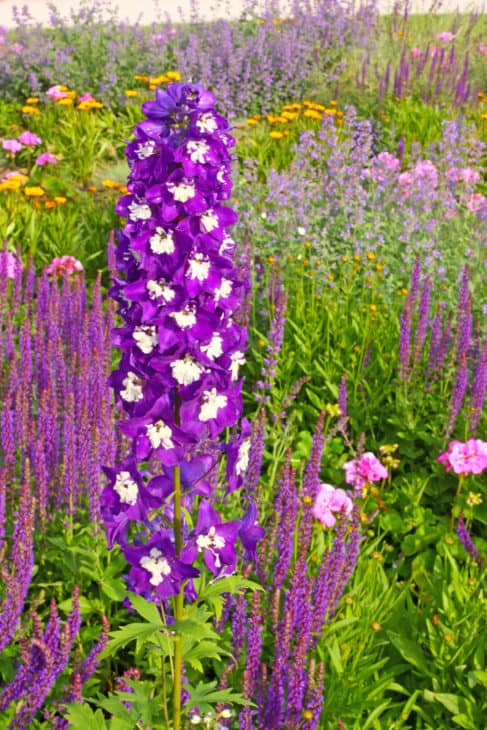
Larkspur is a perennial flowering plant of the Ranunculaceae family. All parts of Larkspur are highly toxic to both humans and livestock. If ingested, it can cause digestive discomfort and skin irritation. Tall Larkspur is also a major cause of cattle poisoning.
17. Irises (Iris)
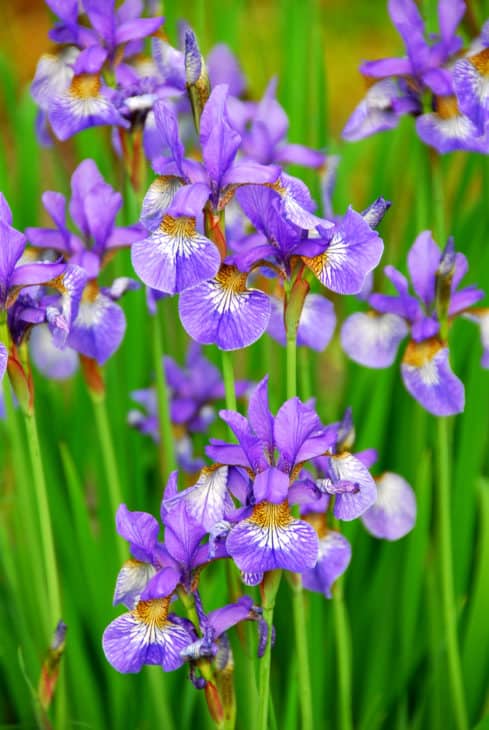
Irises are flowers that come in a range of different colors. They are found in gardens all around the world. Irises are highly toxic and can cause serious illnesses to pets and cattle. They are mildly toxic to humans in ingested.
18. Bleeding Heart (Lamprocapnos)
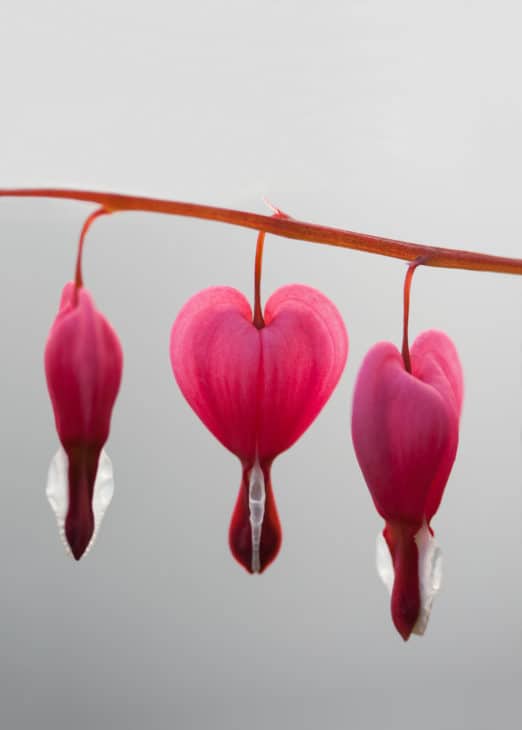
The bleeding heart is a flowering plant that belongs to the herbaceous perennial family. This plant grows up to 30-36 inches tall. It is deer and rabbit resistant. This plant is mainly found in Japan. This plant can cause skin irritation because it contains isoquinoline alkaloids if the leaves are eaten. It may even cause confusion and irritability.
19. Azaleas (Rhododendron)
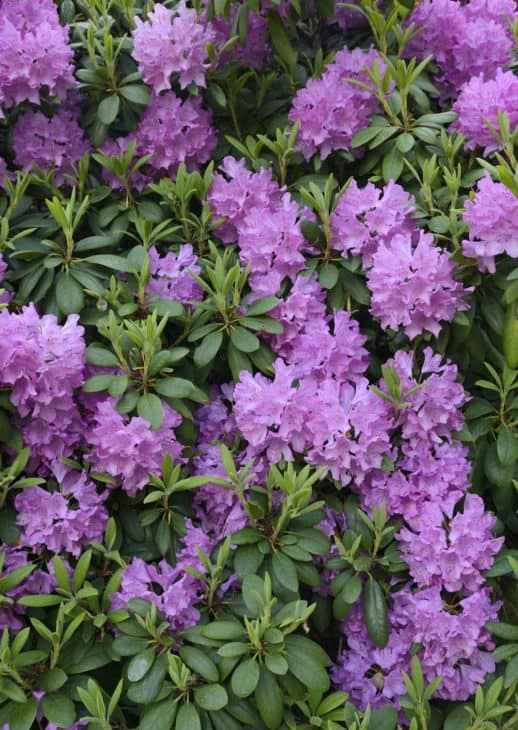
Azaleas belong to Genus Rhododendron, which are shrubs for all kinds of climate. When the climate becomes cold, the plant stands out with large attractive green leaves. Life-threatening poisoning is not possible if only a small number of pieces of this plant are swallowed. But if a person consumes a large amount of this plant or if honey is made out of the flowers, then it can be life-threatening.
20. Buttercup (Ranunculus)
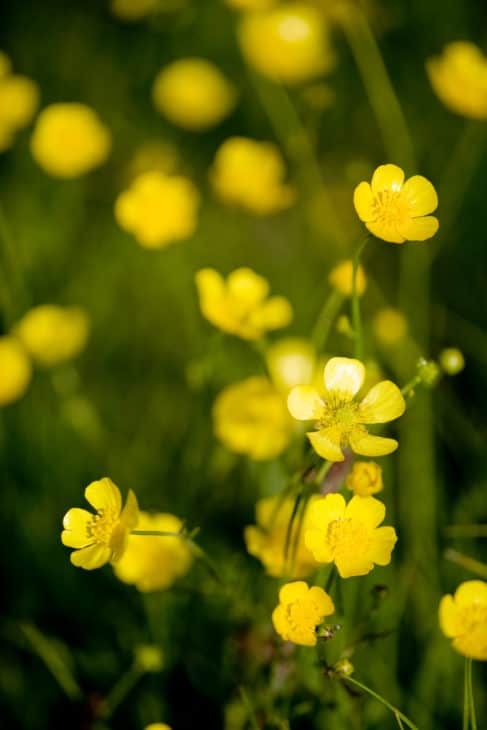
Buttercup is an herb that can be grown above the ground. This plant belongs to the Ranunculus and is found in Northern Europe. The flower of these plants is used as ornaments because they have very bright colors. This plant can be used for skin diseases such as scabies or leukoderma. It contains a chemical that is very irritating to the skin and can cause pain and burning sensations, and inflammation of the tongue.
21. Nightshade (Solanaceae)
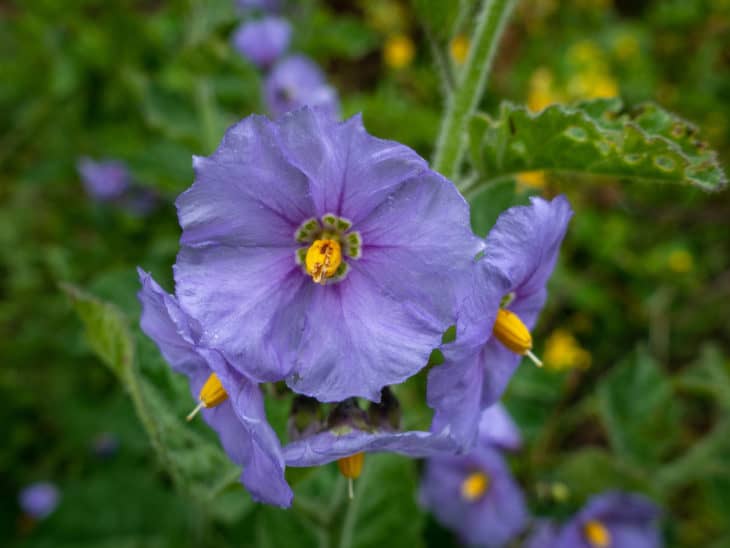
Solanaceae or the nightshade is a plant with flowers and is as important as food or medicine. This plant has leaves that are simple and alternately arranged and have flowers in clusters. The Black nightshade plant can be poisonous if someone eats pieces of it. The poisonous ingredients are Atropine & Solanine. Solanine can be very poisonous, even in a small amount.
22. West Indian Lantana (Lantana camara)
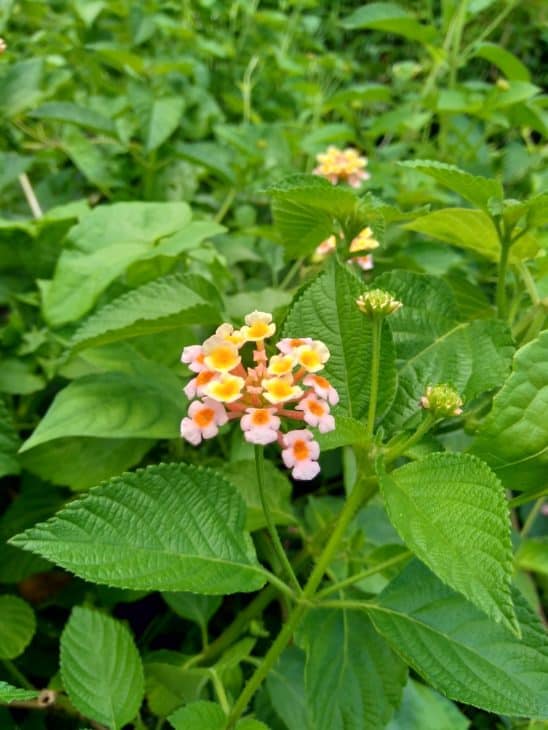
This is a specie that has flowers and is native to the American tropics. It is very adaptable and is a perennial shrub that is 2 m tall, and if it has the right condition, it can grow up to 6 meters tall. The leaves are ovate and have a strong smell when crushed. All lantanas should be treated as poisonous to stock. Red varieties are toxic, but some white and pink flowered varieties can also be highly toxic. Lantana poisoning depends upon the amount and type of Lantana consumed and the intensity of sunlight to which the animal has been consumed.
23. Jasmine (Jasminum)
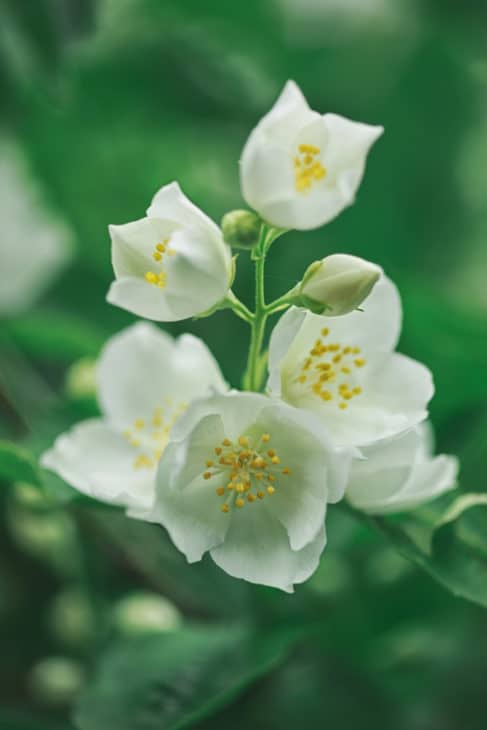
Jasmine, also called jessamine, are very fragrant flowers and are native to tropical and can be used for ornaments too. Most jasmines have climbing branches and have white, yellow, and pink flowers. The leaves are evergreen, and some species have simple leaves. When you decide to cultivate jasmine, make sure that you do not select plants that are not poisonous to the animals. If a person consumes poisonous jasmine, then it may cause gastrointestinal problems like nausea, vomiting, and diarrhea.
24. Daffodil (Narcissus)
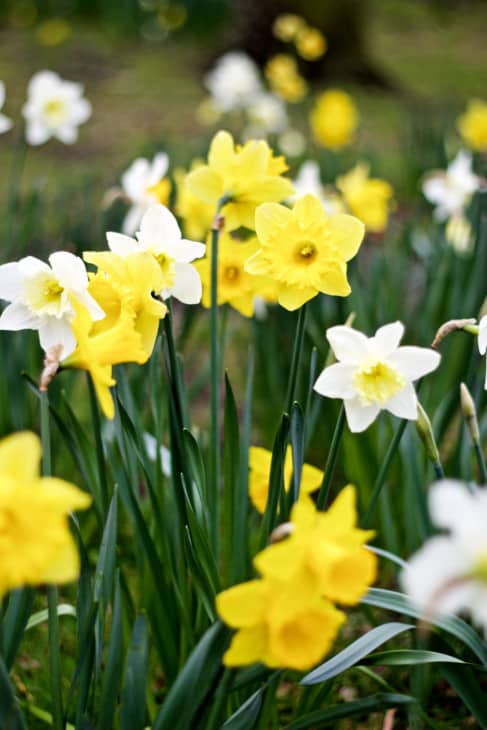
Daffodil or trumpet narcissus are trumpet-like flowers and are native to Northern Europe and is grown in temperate climate around the world. It is a perennial plant and grows up to 16 inches in height. Daffodil as a whole is poisonous. When it is swallowed, it can cause nausea, vomiting, and abdominal pain. If eaten, it can cause severe irritation in the mouth and stomach upset. These symptoms are inconvenient but not life-threatening.

